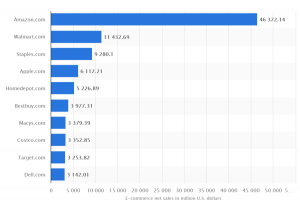How Ann Summers Tackled Hijacked Ads
Ann Summers, a UK retailer known for its lingerie, had a common, yet frustrating problem. About 19.3% of the site visitors were being hijacked by browser-based ads. This is not only a display and online video ad problem — it also occurs in search.
“Once we started blocking them we began to see an increase in revenue,” said Andy Cole, online optimization and UX manager at Ann Summers.
Cole began working with Namogoo more than a year ago, testing the number of site visitors who were affected and getting a better picture of the ads that loaded into the browser to hijack its customers.
Typically, the ads were not from direct competitors. And the brands and the retailers whose ads appeared in the browsers did not know the ad servers were running them and hijacking the browser on their behalf.
“It became a numbers game,” Cole said. “In lingerie, for example, we would see people taken from our site to a department store so they could buy something similar.”
Browser hijacking is very common. The ads find their way into the browser by extensions and other means. Between 15% and 25% of the traffic to ecommerce websites has been exposed to unauthorized injected ads in site visitor’s browser. The retailer isn’t aware of the ad because it serves up based on the consumer’s browser.
When asked how much revenue the company lost during this time, Cole said the company managed to determine the number based on the amount of sessions that saw ads. Conversions rose 2.05%, bringing in about $800,000 more for the year, after Ann Summers began blocking these ads.
Testing the success of the technology, Cole asked Namogoo to tag events into Ann Summers’ analytics platform, so the company could detected malware each time. Initially they ran a split test to detect and block only 50% of the ads. Once that was successful, they moved to block 100%. Cole said they were able to look at the blocked ads through Google Analytics 360, along with the average spend by consumers.
“To be completely honest, we really didn’t know this was happening,” Cole said. “I was introduced to Namogoo … which made us aware of what was happening.”
In Ann Summers’ case, the hijacking affected mostly banner ads, but it also occurs in search ads. Chrome extensions were caught hijacking user search engine results in June. One in particular allowed users to queue multiple YouTube videos in the order they wanted to later view. It also intercepted search engine queries, redirecting them through the Croowila URL and then redirecting the users to a custom search engine named Information Vine, which listed the same Google search results but heavily infused with ads and affiliate links, according to one media outlet.
(71)
Report Post





